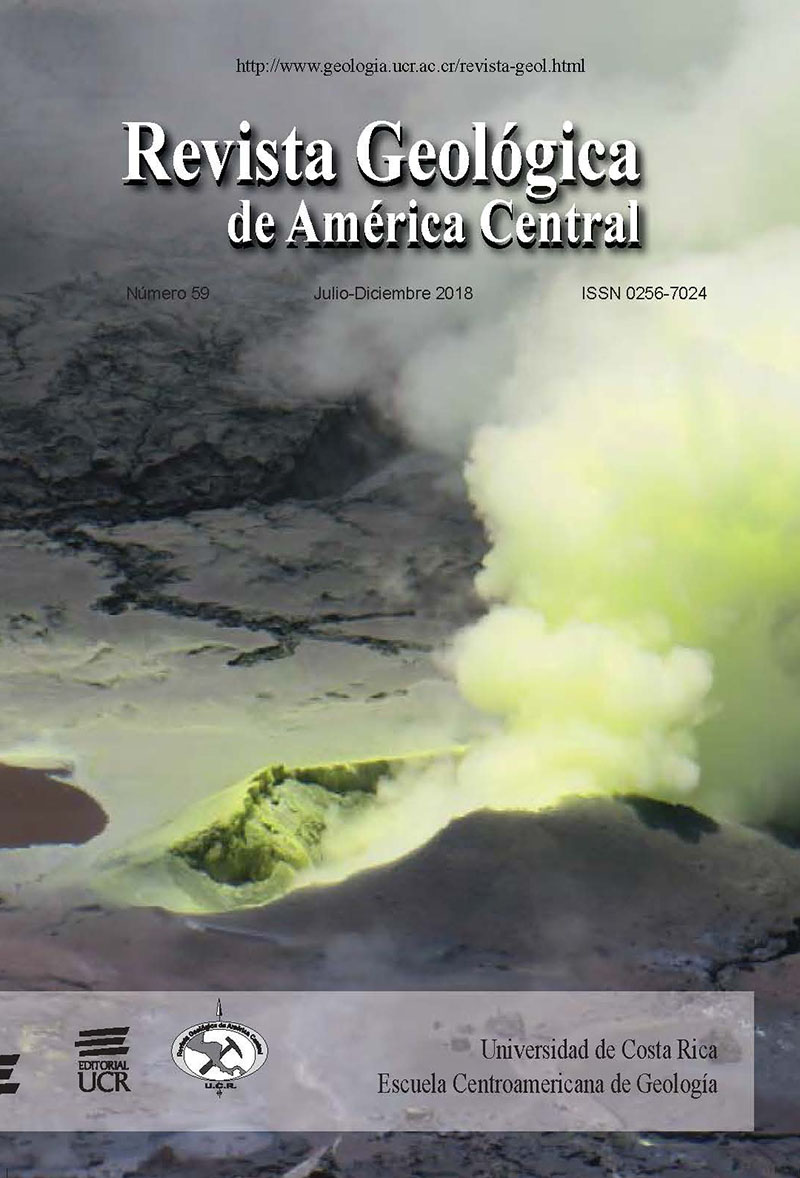Resumen
en: En los afloramientos de la playa Doña Ana – Formación Punta Carballo, Mioceno – se reconocen tempestitas proximales, depositadas en una plataforma somera (bahía protegida), afectada episódicamente por tormentas fuertes. Se preserva una comunidad constituida principalmente por bivalvos del género Atrina, con evidencias de exhumación y remoción, sobreyacida por al menos seis niveles de acumulación de conchas de espesor centimétrico a decimétrico, que contienen diferentes especies de moluscos (bivalvos, gasterópodos y nautiloideos), cangrejos (fragmentos de caparazón y tenazas), dientes de tiburón, así como restos de troncos y ramas carbonizados. Se observan estructuras típicas de tormentas como estratificación cruzada y HCS, gradación positiva, orientación, imbricación, estructuras de relleno, erosión e hiatos.Citas
Ager, D. V. (1974). Storm deposits in the Jurassic of the Moroccan High Atlas. Palaeogeography, Palaeoclimatology, Palaeoecology, 15(2), 83-93.
Aguirre, J. y Sánchez-Almazo, I. M. (2004). The Messinian post-evaporitic deposits of the Gafares area (Almerı́a-Nı́jar basin, SE Spain). A new view of the “Lago-Mare” facies. Sedimentary Geology, 168(1), 71-95.
Alvarado, L. y Alfaro, E. (2003). Frecuencia de los ciclones tropicales que afectaron a Costa Rica durante el siglo XX. Tópicos Meteorológico y Oceanográficos, 10(1), 1-11.
Bird, E. C. F. (2008). Coastal geomorphology: an introduction (2nd ed). Chichester, England: John Wiley y Sons.
Bloos, G. (1982) Shell Beds in the Lower Lias of South Germany – Facies and origin. In A. Seilacher y G. Einsele (eds), Cyclic and event stratification (pp. 223-239). Berlin: Springer.
Denyer, P., Aguilar, T. y Alvarado, G. E. (2003). Geología y estratigrafía de la hoja Barranca, Costa Rica. Revista Geológica de América Central, 29, 105-126.
Einsele, G. (2000). Coastal and shallow sea sediments (including carbonates). Berlin: Springer.
Fernández, M. (2002). Daños, efectos y amenaza de tsunamis en América Central. Revista Geológica de América Central, 26, 71-83.
Fürsich, F. T. (1982). Rhythmic bedding and shell bed formation in the Upper Jurassic of East Greenland. In A. Seilacher y G. Einsele (Eds.), Cyclic and event stratification, (pp. 208-222). Berlin: Springer.
Hagdorn, H., y Mundlos, R. (1982). Allochthonous coquinas in the Upper Muschelkalk—Caused by storm events? In A. Seilacher y G. Einsele (eds), Cyclic and event stratification (pp. 199-199). Berlin: Springer.
Hamblin, A. P., y Walker, R. G. (1979). Storm-dominated shallow marine deposits: the Fernie–Kootenay (Jurassic) transition, southern Rocky Mountains. Canadian Journal of Earth Sciences, 16(9), 1673-1690.
Keen, A. M. (1971). Sea shells of tropical west America: Marine mollusks from Baja California to Peru. California: Stanford University Press.
Kreisa, R. D. y Bambach, R. K. (1982). The role of storm processes in generating shell beds in Paleozoic shelf environments. In A. Seilacher y G. Einsele (Eds.), Cyclic and event stratification (pp. 200-207). Berlin: Springer
Kuijpers, E. (1979). Análisis sedimentológico de la Formación Punta Carballo (Mioceno), Costa Rica. Inst. Geogr. Nac., Informe Semest. Julio—diciembre, 77-94.
Liu, K. B. (2007). Paleoclimate Reconstruction. Paleotempestology. In S. A. Elias (Ed.), Encyclopedia of Quaternary Science (pp. 1974-1985). Oxford: Elsevier.
Morton, R. A., Gelfenbaum, G., y Jaffe, B. E. (2007). Physical criteria for distinguishing sandy tsunami and storm deposits using modern examples. Sedimentary Geology, 200(3), 184-207.
Pettijohn, F. J. y Potter, P. E., 1964: Atlas and Glossary of Primary Sedimentary Structures. Berlin: Springer-Verlag.
Pielke Jr, R. A., Rubiera, J., Landsea, C., Fernández, M. L., y Klein, R. (2003). Hurricane vulnerability in Latin America and the Caribbean: Normalized damage and loss potentials. Natural Hazards Review, 4(3), 101-114.
Schmidt, H., y Seyfried, H. (1991). Depositional sequences and sequence boundaries in fore-arc coastal embayments: case histories from Central America. En D. I. M. Macdonal (ed.), Sedimentation, Tectonics and Eustasy: Sea-Level Changes at Active Margins (pp. 241-258). Oxford: Blackwell Scientific Publications.
Seilacher, A. (1977). Evolution of trace fossil communities. Developments in Palaeontology and Stratigraphy, 5, 359-376.
Seilacher, A. (1982). General remarks about event deposits. In A. Seilacher y G. Einsele (Eds.), Cyclic and event stratification (pp. 161-174). Berlin: Springer.
Seyfried, H., Krawinkel, H. y Aguilar, T. (1994). Significance of stratigraphic bounding surfaces in a shallow marine, sand-swamped forearc basin: a case study from the Punta Judas Formation (Miocene, Costa Rica). Profil, 7, 293-323.
Seyfried, H., Sprechmann, P. y Aguilar, T. (1985). Sedimentología y paleoecología de un estuario del litoral Pacífico del Istmo Centroamericano primordial (Mioceno Medio, Costa Rica). Revista Geológica de America Central, 3, 1-68.
Tucker, M. E. (1991). Sedimentary petrology, an introduction to the origin of sedimentary rocks. Oxford: Blackwell Scientific Publications.
Walker, R. G. 1984: Facies Models. Toronto, Ont: Geological Association of Canada Publications, Business and Economic Service.
Wendt, J. y Aigner, T. (1982). Condensed Griotte facies and cephalopod accumulations in the Upper Devonian of the eastern Anti-Atlas, Morocco. In Cyclic and Event Stratification (pp. 326-332). Berlin: Springer.
Wiberg, P. (2000). A Perfect Storm: formation and potential for preservation of storm beds on the continental shelf. Oceanography, 13(3), 93-99.
Williams, H. F. (2011). Shell bed tempestites in the Chenier Plain of Louisiana: late Holocene example and modern analogue. Journal of Quaternary Science, 26(2), 199-206.
Comentarios

Esta obra está bajo una licencia internacional Creative Commons Reconocimiento-NoComercial-CompartirIgual 3.0.
Derechos de autor 2018 Teresita Aguilar, Raquel Granados






